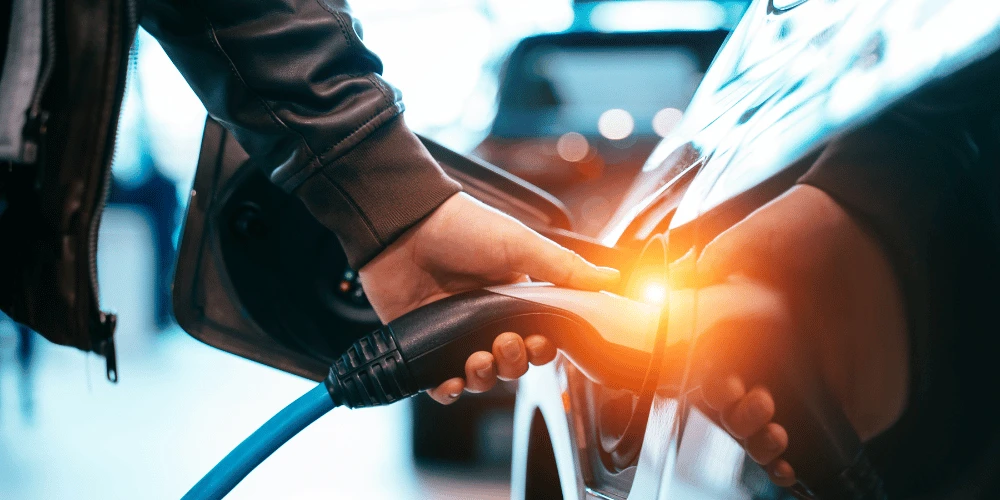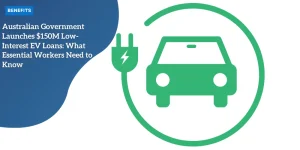Ford Tackles EV Affordability: New Battery Technology Set to Transform Electric Car Market

Anúncios
Introduction: Ford’s Game-Changing Announcement
Ford has ignited excitement in the electric vehicle world with news of a major leap forward in battery technology.
The company announced a breakthrough using Lithium Manganese Rich (LMR) chemistry—an innovation aiming to make electric cars both more affordable and able to travel further on a single charge.
This move is about more than headlines: Ford is promising to scale this new battery chemistry and bring it into mass production within the decade.
With intense research at its Battery Center of Excellence, Ford is steering toward not just cleaner driving, but also everyday electric vehicles that work for real people, real budgets, and real lives.
Anúncios
Understanding LMR Battery Technology
What Sets Lithium Manganese Rich Apart
Lithium Manganese Rich (LMR) batteries change up the EV battery game.
Traditional EV batteries often use nickel, cobalt, or iron in their chemistry.
LMR swaps in manganese as a key ingredient.
This shift matters because manganese is more plentiful and significantly cheaper than nickel or cobalt, helping cut costs while boosting safety and stability.
Unlike nickel chemistries, LMR batteries are highly stable, reducing risks like thermal runaway—a dangerous overheating issue common in some current batteries.
Anúncios
Advantages: Safety, Stability, and Density
One of the main perks of LMR chemistry is its enhanced safety profile, making fires and overheating less likely.
Stability is another big plus, as manganese resists breakdown over time better than high-nickel mixes.
Ford suggests their LMR cells also promise higher energy density.
That means future EVs could go further on a single charge, making road trips more appealing and reducing “range anxiety.”
While earlier manganese batteries faced shorter lifespans and voltage drops, Ford claims to be tackling these problems head-on by refining the chemistry without sacrificing performance.

Pioneering Work at Ford’s Battery Centers
Research and development for LMR batteries are happening in Ford’s state-of-the-art Battery Center of Excellence and Ion Park.
Teams here are moving beyond the laboratory phase, with Ford already producing their second generation of LMR cells on a pilot line.
This serious investment shows Ford’s commitment to scaling the technology, putting affordable, longer-range EVs within reach for more drivers.
These ongoing advances set the stage for addressing the economic side of EV adoption.
Solving Historical Challenges with Manganese Batteries
The Problem with Early Manganese Cells
Manganese-based batteries have long been seen as an attractive option thanks to their abundance and low cost. However, these batteries have historically suffered two main issues:
- ⚡Voltage decay, which meant they would lose the ability to hold energy as efficiently over time
- ⚡Short charge cycle life, so they couldn’t be reliably charged and discharged over many years
These limitations kept manganese batteries from being the go-to choice for electric vehicles, despite their potential for greater safety and lower costs.
Ford’s Solution: Tackling Key Weaknesses
Ford claims it has directly addressed these long-standing problems while maintaining the energy density needed for longer ranges.
The company says its new Lithium Manganese Rich (LMR) batteries are engineered to avoid previous pitfalls, so there’s less voltage decay and better longevity—even as they ramp up energy storage.
Expert Reflections: Progress or Revolution?
Some industry watchers remain cautious.
As Sam Fiorani from AutoForecast Solutions notes, Ford’s approach appears to be more about steady progress than a single breakthrough.
While the company’s innovations are promising, experts are awaiting more details before calling it a complete game-changer.
Charles Poon at Ford highlights that LMR technology could still “make a step change,” especially regarding safety, stability, and potentially higher energy density compared to today’s nickel-rich batteries.
With Ford’s research pushing past lab results and moving towards real-world vehicles, the stage is set for larger changes in how we power electric cars.
The Economic Impact: Making EVs More Affordable
Batteries and the High Cost of EVs
Batteries are the single largest expense in building an electric vehicle, eating up at least a third of the total price tag.
For most buyers, this steep cost is what keeps EVs out of reach compared to their gasoline-powered counterparts.
Ford’s new push with Lithium Manganese Rich (LMR) chemistry targets this very pain point, aiming to bring batteries—and overall EVs—closer to the affordability of traditional cars.
Lowering Costs With LMR Technology
Ford says its LMR batteries should be less expensive to manufacture than today’s mid-nickel batteries, largely because manganese is cheaper and more plentiful.
By focusing on abundantly available materials, Ford hopes to slash battery costs, making it possible to price EVs in line with gas vehicles.
According to Ford, hitting cost parity is an essential step to spark mainstream adoption and put more drivers into EVs.
A Pivotal Moment for Mainstream EV Adoption
Slashing battery expenses could finally remove the last big obstacle for hesitant car buyers—price.
With LMR, Ford is not just improving its technology; it is betting that affordable EV technology will reshape the competition for new car buyers everywhere.
This evolution sets the stage for exploring the environmental and ethical ripple effects of Ford’s battery breakthrough.
Environmental and Ethical Advantages
Reducing Dependence on Cobalt
Cobalt is often one of the most expensive components in EV batteries, and its sourcing has raised serious ethical concerns, especially with child labor in some mining regions.
Ford’s new Lithium Manganese Rich (LMR) batteries use more abundant and accessible materials, like manganese, which are easier to source and less costly.
As a result, these batteries have the potential to cut—or even eliminate—the need for cobalt in many applications, lessening ethical and human rights risks tied to EV production.
Sustainability Through Material Choice
Beyond ethical sourcing, using manganese—which is not only plentiful but also cheaper and more stable—reduces the environmental footprint of making batteries.
This shift away from scarce and high-impact minerals supports more responsible supply chains.
By relying on elements that are widely available, LMR technology can enable large-scale EV manufacturing while preserving natural resources for the long term.
Broader Impact on Green Goals
Lowering the cost and raising the accessibility of safer batteries supports a greener future for transportation.
Manufacturing with fewer rare minerals means less destructive mining practices, fewer harmful emissions, and an overall cleaner process.
This step brings wider EV adoption within reach, helping to reduce dependence on fossil fuels and move toward a more sustainable society.
With these critical environmental and ethical gains, Ford’s LMR batteries mark a real shift in how electric vehicles are made, not just how they perform.
This lays a foundation for the next phase: understanding how these chemical advancements support Ford’s current and future electric lineup.
Ford’s Current Electric Lineup and Future Plans
Showcasing Today’s Electric Models
Ford’s all-electric lineup makes a bold statement in the EV market.
The Mustang Mach-E offers sporty fun wrapped in an SUV body, appealing to both enthusiasts and families.
The F-150 Lightning takes a familiar American icon and electrifies it, providing impressive towing capabilities and instant torque.
For commercial needs, the E-Transit van delivers sustainable hauling for businesses looking to cut fuel costs and emissions.
Sales Growth Signals Rising Demand
Ford’s investment in electric mobility is starting to pay off.
In the first quarter alone, Ford sold 22,550 all-electric vehicles—a solid 11.5% increase from last year.
This growth shows drivers are ready for electric options if they combine practicality, value, and range.
Preparing for Tomorrow’s EVs
Looking forward, Ford plans to integrate its breakthrough Lithium Manganese Rich (LMR) battery technology into future vehicles within this decade.
After extensive research at their Battery Center of Excellence and Ion Park, the company is moving from pilot lines to scaling up real-world production, signaling momentum toward even more affordable and capable EVs in the coming years.
With this progress, Ford is laying the groundwork for changes that could reshape not just its lineup, but the global EV landscape.
The Global EV Battery Race
CATL and Ford: The Rise of Battery Innovation
China’s CATL, the world’s largest supplier of EV batteries, recently revealed advances promising cheaper, lighter, and faster-charging batteries that are resistant to cold and can deliver a five-minute quick charge—enough for 320 miles of driving.
Though these batteries won’t be widely available for a few years, CATL’s aggressive timeline keeps global competitors on their toes.
Meanwhile, Ford has announced significant progress in Lithium Manganese Rich (LMR) chemistry.
While CATL focuses on rapid charging and cold resistance, Ford is targeting affordability and broader use of abundant materials.
Both companies are racing to crack the code that will make EVs a real alternative to gasoline-powered cars.
Competing on Cost and Sustainability
The battery arms race is about more than convenience—cost and sustainability are in the spotlight, too.
Ford aims for batteries that use minerals like manganese, which are cheap and widely available, while CATL’s innovations may further pressure prices down globally.
Lower costs mean automakers can price EVs closer to their gasoline counterparts, an essential step for mass consumer adoption.
Ford’s Position in the Market
With proven models like the Mustang Mach-E, F-150 Lightning, and E-Transit, Ford already holds a growing share of the EV market.
An 11.5% year-over-year increase in all-electric sales shows consumers are hungry for practical, affordable EVs.
By focusing on LMR batteries, Ford is carving a spot as an industry leader in sustainable and accessible battery tech.
The competitive landscape pushes constant innovation, as automakers worldwide hustle to offer safer, longer-lasting, and more affordable batteries.
This environment set the stage for the ongoing transformation of electric transportation.
Expert Analysis and Industry Perspectives
Weighing Ford’s Breakthrough
Industry experts have responded to Ford’s battery announcement with cautious optimism.
Many agree that using Lithium Manganese Rich (LMR) cells could reduce costs and make electric vehicles more practical for everyday drivers.
However, some analysts think Ford’s achievements are a promising step rather than a total breakthrough.
Sam Fiorani, an auto forecasting executive, notes that battery tech is far less mature than the internal combustion engine.
He points out that improvements like LMR might move EVs forward, but issues like voltage decay and short charge cycles remain significant hurdles.
Comparing Batteries and Engines
Experts also highlight that developing reliable, affordable LMR batteries will take time.
While gas engines have been perfected over a century, battery technology is still evolving.
Sam Abuelsamid, from Telemetry Insights, says that previous manganese batteries struggled with longevity, and the details behind Ford’s claimed advances are still lacking.
Yet, there’s hope.
Using plentiful manganese could help reduce costs and avoid supply chain problems tied to nickel or cobalt.
Incremental Step or Real Shift?
Many in the industry see Ford’s LMR tech as a substantial but incremental shift.
There is widespread agreement that eliminating expensive materials like cobalt will benefit cost and ethics, but whether LMR is a step change or just another stage in a gradual evolution remains to be seen.
Overall, the response is hopeful—experts are eager to see if Ford can scale this innovation for mass-market use, which would open new possibilities for affordable EVs.
Ford’s battery progress reflects how rapidly the auto industry is shifting, with every advancement bringing us closer to more accessible and sustainable transportation.
Conclusion: The Future of Electric Vehicles
Where LMR Could Take Us
Ford’s work with Lithium Manganese Rich (LMR) batteries hints at a big leap in the electric vehicle world.
By focusing on a safer, more abundant, and stable battery material, Ford aims to cut costs while increasing driving range.
Industry experts see this as real progress, even if some challenges remain, like voltage decay and short cycle life.
Ford’s Vision and Affordability Goals
Affordability sits at the heart of Ford’s strategy.
The company wants to make EVs a viable option for more drivers by pushing battery costs down, aiming for price parity with gasoline vehicles.
Improvements in LMR chemistry could lead to more practical, accessible cars on the road, aligning with Ford’s commitment to a broader, greener future.
What Consumers Can Expect
As LMR batteries mature, drivers may see longer range, safer vehicles at prices closer to traditional cars.
This could help spark a real shift toward widespread electric vehicle adoption, making the dream of affordable, everyday EVs more achievable than ever.






